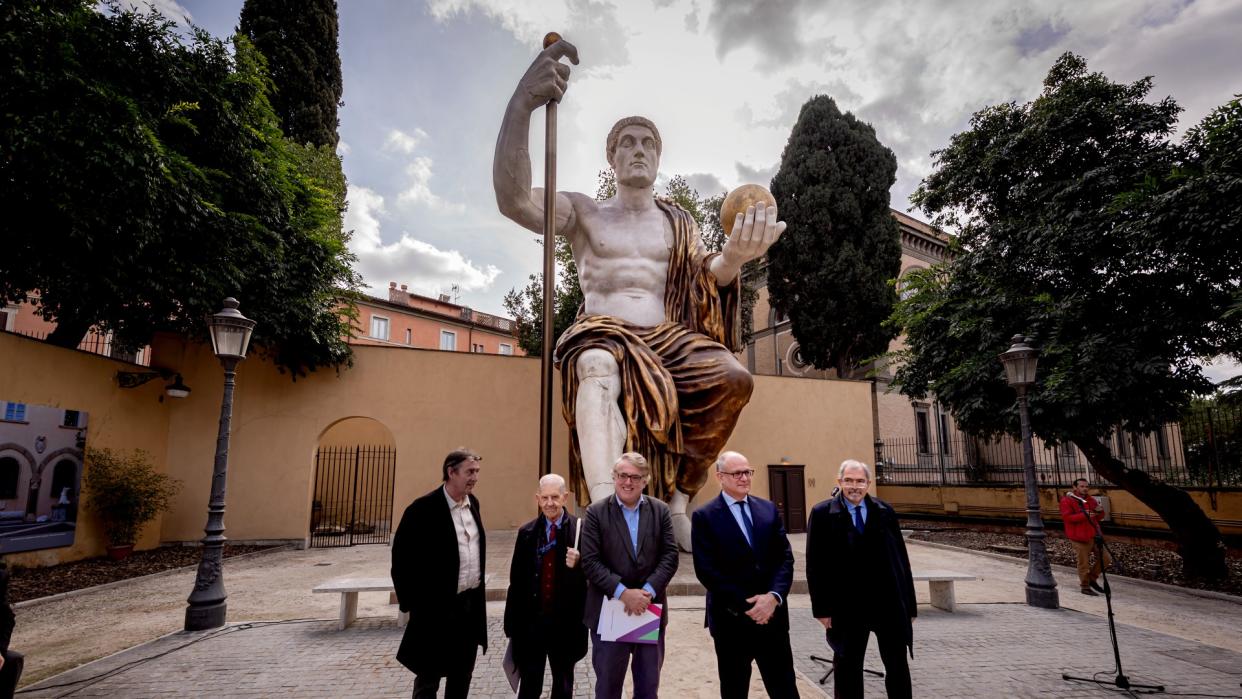Rome's Colossus of Constantine

- Oops!Something went wrong.Please try again later.
A viral social media trend last year suggested the Roman Empire is frequently in men's thoughts. Now, an Ancient Roman's digital footprint is in the headlines too.
Fourth-century ruler Constantine, who was the first Roman emperor to convert to Christianity, is living up to his moniker of "Constantine the Great" with a "massive" new statue in Rome, said The Associated Press (AP).
Authorities unveiled the 13-metre-high structure on Tuesday: a replica of a statue of Constantine from about AD312, created using 3D modelling technology from scans of the nine remaining original "marble body parts".
Body parts and 'British wizardry'
For more than 500 years, visitors keen to see the "colossal statue" that once graced Rome's Forum have "made do with the bits and pieces stacked in a courtyard of the Capitoline museum", said The Times. These remains, dug up in 1486, comprise an "enormous marble head with staring eyes", feet, an elbow, a shin, wrist, knee, hand and an arm.
But with 3D scanning, research and "some British wizardry", artist Adam Lowe managed to recreate the whole statue at his Factum Foundation workshop, a Madrid-based non-profit that makes digitally reconstructed replicas of cultural masterpieces.
"Its scale is breathtaking and it is very emotional to see Constantine looking out across Rome again," said Lowe, whose reproduction is being displayed at the Capitoline Museums in Italy's capital.
'The violence of power'
Historians believe the original statue depicted the god Jupiter, before Constantine had it rededicated to himself.
"What was frustrating is that there is a statue of Jupiter at the Hermitage in St Petersburg we would have liked to scan," said Lowe, "but couldn't because of the Russian invasion of Ukraine."
"Jupiter would have had a beard, and on the face of the statue you can see traces of a beard," Salvatore Settis, an archaeologist and art historian who worked with Lowe, told The Times. The beard was chipped off to make it resemble clean-shaven Constantine.
Despite the loss of godlike facial hair, the statue still "inspires awe in the smaller viewers below", said news agency AP – just as Constantine intended, according to officials.
"In this statue there's not just beauty, there's the violence of power," said Settis, representing the Fondazione Prada, the cultural arm of the Milan-based fashion house that paid for the project.
A copy of the reproduction, funded by British investor Jonathan Ruffer, has also been made, and will be displayed in the County Durham town of Bishop Auckland.
That's more fitting than it sounds, Lowe told The Times, because Constantine was running the forces patrolling Hadrian's Wall and was proclaimed emperor in York.

